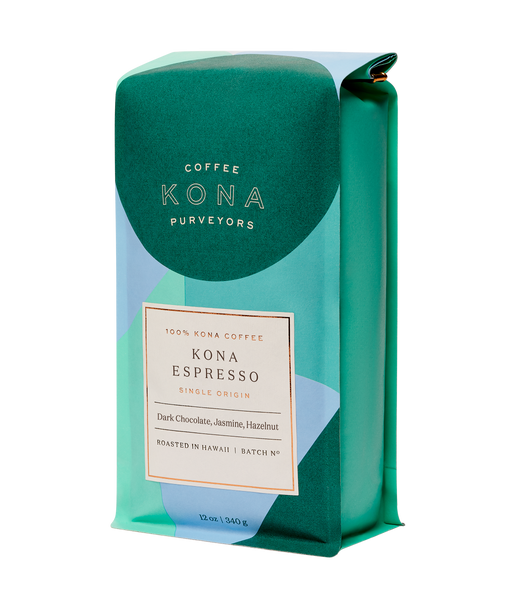Exploring the Origins Behind Premium SOE Single Origin Espresso
Wiki Article
Recognizing Coffee Beans: the Journey From Coffee to Blended Coffee Beans

The Beginnings of Coffee: A Global Perspective
While you may think of coffee as a contemporary staple, its origins trace back centuries, intertwining with cultures across the world. The tale begins in Ethiopia, where tale says a goat herdsman named Kaldi found the invigorating impacts of coffee beans after observing his goats frolicking vigorously after eating them. This stimulated rate of interest, leading to coffee's spread to Arab investors who valued the made beverage. By the 15th century, it got to Persia, Egypt, and Turkey, where coffee shops came to be social hubs for discussion and society.As trade routes broadened, coffee made its means to Europe in the 17th century, rapidly gaining appeal. Each society added its special spin to coffee preparation, improving its background.
Growing and Harvesting of Espresso Beans
As coffee's trip progressed, the focus changed to the cultivation and harvesting of specific bean varieties, especially those made use of for coffee. You'll find that espresso beans usually come from Arabica or Robusta plants, each offering distinct tastes. The excellent growing problems include high elevations and abundant, well-drained dirt, which boost the beans' top quality.Throughout the harvest, selecting techniques vary. In some regions, employees hand-pick ripe cherries, making sure only the most effective fruit goes to handling. In other areas, mechanical farmers are made use of, specifically on larger ranches. When the cherries get to peak ripeness for maximum taste., timing is essential; you desire to gather.
When gathered, the beans are planned for processing, which is important in establishing their final taste. Comprehending the farming and gathering processes gives you understanding into what enters into your preferred espresso, improving your appreciation for each mug.
Processing Techniques: From Cherry to Bean
Now that you've learned concerning gathering coffee beans, let's check out exactly how those cherries transform right into the coffee beans you love. You'll see how various harvesting techniques impact flavor, complied with by the vital actions of fermentation and drying. We'll damage down the milling and grading procedure that determines your coffee's top quality.Collecting Strategies Discussed
When it involves coffee, comprehending harvesting techniques is essential, since they directly impact the taste and quality of the beans you delight in. There are 2 key methods: careful picking and strip selecting. Selective choosing involves hand-picking just ripe cherries, ensuring you get the very best quality beans. This method often causes a richer taste profile, though it's even more labor-intensive. On the other hand, strip selecting methods harvesting all cherries at the same time, despite ripeness. While it's quicker and cheaper, this can cause a mix of flavors, impacting the final item. Inevitably, the choice of collecting method can greatly affect your coffee experience, so it deserves recognizing exactly how those beans made it to your mug.Fermentation and Drying
After collecting, the following action in processing coffee beans play a substantial role in shaping their taste. You'll locate that fermentation is crucial, as it aids break down the mucilage bordering the beans, improving their preference profile. Depending upon the method, this process can last from a couple of hours to a number of days, with differing outcomes based on temperature and humidity.Sun-drying enables the beans to absorb tastes from the setting, while mechanical drying guarantees consistent moisture levels no matter of weather condition. Appropriate drying out is vital to stop mold and maintain the beans' high quality, ultimately affecting your mug of coffee.
Milling and Grading Process
As fermentation and drying set the stage for taste advancement, the milling and grading procedure warranties that just the most effective coffee beans make it to your cup. This phase entails removing the external layers of the coffee cherry, including the parchment and husk. After milling, the beans are arranged by dimension and weight, guaranteeing an uniform quality. You'll find that grading assists recognize issues and classify beans, which affects taste and aroma. Premium beans obtain a higher quality, causing a richer coffee experience. Once graded, the beans await packaging and delivery, preserving their unique characteristics. This careful procedure is essential for delivering the extraordinary taste you enjoy in every sip of your favored brew.Roasting Methods: Opening Flavor Possible
When you roast coffee beans, the approach you choose can dramatically influence the flavor profile. Comprehending the connection in between time, temperature, and toasting methods is crucial to disclosing the potential of your mixture. Let's explore how these aspects integrated to produce the perfect mug.Roasting Techniques Explained
While you might believe that all coffee roasting methods generate the same results, the truth is that each technique reveals unique taste possibilities in the beans. Drum roasting uses a turning drum to uniformly disperse warmth, enhancing caramelization and producing a balanced taste. Air roasting, on the various other hand, flows warm air around the beans, promoting a lighter roast with pronounced level of acidity.
Effect On Flavor Profile
Various toasting techniques not only affect the procedure yet also greatly influence the taste account of the coffee beans. When you pick a light roast, you'll experience bright acidity and floral notes, showcasing the bean's origin. In comparison, a medium roast balances level of acidity with sweetness, commonly revealing chocolatey undertones. Dark roasts, on the various other hand, bring out bold, smoky flavors, sometimes covering up the bean's unique qualities. Each technique discloses different oils and compounds, bring about a variety of tastes. By explore various toasting styles, you can discover which accounts reverberate with your taste. Comprehending these subtleties aids you value the artistry behind your mug of coffee, improving your total experience with every sip.Time and Temperature Variables
To release the full taste possibility of coffee beans, both time and temperature level during the toasting procedure play significant roles. When toasting, you'll discover that higher temperature levels can promptly create flavors, yet if you rush it, you might wind up with Our site burned notes. On the other hand, lower temperature levels permit an extra steady taste development, showcasing the beans' one-of-a-kind attributes.
Timing is equally as important; expanding the roast too long can cause a loss of level of acidity and illumination, while too brief a roast could leave the beans underdeveloped. Discovering that sweet place needs practice and experimentation. By adjusting these aspects, you can disclose the abundant, intricate tastes concealed within each bean, creating an absolutely impressive coffee experience.
The Art of Blending: Crafting Distinct Coffee Accounts

go to the website Begin by choosing a base coffee that supplies a solid foundation. A bright Ethiopian bean can bring fruitiness, while an abundant Brazilian coffee adds body.
As you blend, keep in mind that each mix tells a tale. You're not simply making coffee; you're creating an experience. So, take your time, taste regularly, and delight in the journey of discovering your signature blend.
Developing Methods: Exactly How Prep Work Influences Flavor
Mixing coffee opens up a domain of flavor opportunities, however exactly how you brew that blend can substantially affect your final mug. On the other hand, a pour-over highlights the coffee's clearness and illumination, ideal for showcasing delicate notes.Coffee, with its high pressure, produces a focused shot that emphasizes sweet taste and crema. If you like a lighter mixture, take into consideration a cool mixture technique; it produces a smooth, much less acidic preference.
Inevitably, trial and error is key. Changing variables like water temperature level, grind size, and brew time can transform your coffee's profile. Embrace the art of brewing to find the tastes hidden in your coffee blends. The right technique can elevate your experience to brand-new heights.
The Future of Coffee: Sustainability and Development
As the coffee market progresses, sustainability and technology are coming to be vital for addressing ecological challenges and meeting consumer demands. You'll see that even more coffee firms are adopting environment-friendly techniques, from sourcing beans fairly to executing sustainable farming strategies. These changes not only aid the planet but also improve the top quality of the coffee you take pleasure in.You may see innovations like naturally degradable packaging and water-saving developing methods that minimize waste. Advanced technology, such as blockchain, is likewise becoming popular, guaranteeing openness in the supply chain, which permits you to trace your coffee back to its beginnings.
On top of that, investing in neighborhood communities and sustaining farmers with fair profession efforts cultivates a much more sustainable coffee community. As you drink your following mug, keep in mind that your options can add to a brighter future for coffee. By opting for lasting brands, you're not simply delighting in a beverage; you're making a positive effect on the globe.
Often Asked Questions
What Is the Difference Between Arabica and Robusta Beans?
Arabica beans are smoother, sweeter, and have a greater level of acidity, while robusta beans are more powerful, extra bitter, and consist of more caffeine. When making your coffee., you'll discover these differences in taste and aroma.Just How Does Elevation Affect Coffee Bean Flavor?
Altitude impacts coffee bean flavor considerably. Greater elevations produce beans with brighter level of acidity and complex flavors, while reduced altitudes usually produce beans that are much heavier and less nuanced. You'll discover these differences in your mug!What Are the Wellness Advantages of Alcohol Consumption Coffee?
Drinking coffee can increase your energy, boost psychological focus, and also boost physical performance. It's rich in anti-oxidants, may reduce the risk of particular illness, and can promote a much healthier metabolic process when eaten in moderation.Can Coffee Beans Be Reused for Developing?
Yes, you can recycle coffee beans for developing, Get More Info yet the flavor may be weak. If you appreciate exploring, attempt recycling them in different methods, like cold mixtures or adding to smoothies for an extra kick.How Should I Store Coffee Beans for Freshness?
To maintain your coffee beans fresh, keep them in a closed container in an amazing, dark place. Stay clear of exposing them to dampness, warmth, or light, as these aspects can quickly weaken their flavor and scent.Understanding Coffee Beans: the Trip From Espresso to Blended Coffee Beans.
Now that you've found out about harvesting coffee beans, let's discover how those cherries transform right into the coffee beans you like.When you roast coffee beans, the approach you choose can dramatically influence the taste profile - Single Origin Espresso.While you might assume that all coffee toasting techniques yield the exact same outcomes, the truth is that each strategy reveals unique flavor potentials in the beans.Various roasting approaches not just affect the process but also significantly impact the flavor profile of the coffee beans
Report this wiki page